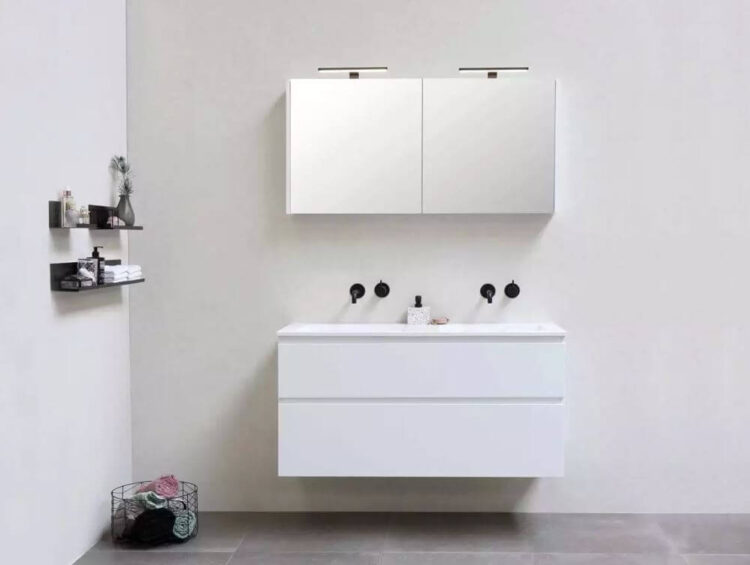A bathroom unit refers to the various fixtures and elements that make up a bathroom, including the toilet, sink, shower, and storage options.
The toilet is the centerpiece of most bathroom units and operates by flushing waste down a drain and into a sewer or septic system. A lever or button is typically used to initiate the flushing mechanism, which uses water to clean the bowl and wash the waste down the drain. The sink is used for washing hands and other personal hygiene tasks. It typically has a basin with a faucet and a drain. The faucet controls the flow of water into the sink, and the drain allows water to flow away after use. The shower is used for bathing and typically has a showerhead, a faucet for controlling the flow of water, and a drain for removing used water. Some batteries also have additional features like adjustable showerheads, built-in shelving, and built-in seating.
Bathroom units often also include storage options, such as cabinets, shelves, and drawers, for storing towels, toiletries, and other items. Overall, the purpose of a bathroom unit is to provide a convenient and functional space for personal hygiene and grooming. By incorporating the right fixtures, materials, and design elements, you can create a bathroom unit that is both functional and aesthetically pleasing, improving the overall functionality, comfort, and aesthetic appeal of your home.
Things Everyone Knows About BATHROOM Units That You Don’t:
Here are three things about bathroom units that you may not be aware of:
Bathroom units can be designed to be eco-friendly:
Bathroom units can be designed to conserve water and reduce environmental impact. High-efficiency toilets, showerheads, and faucets can significantly reduce water usage while using sustainable materials like bamboo and recycled plastic in the construction of bathroom furniture can also have a positive impact on the environment.
Bathroom units can be customized to meet specific needs:
Bathroom units can be designed to meet the specific needs of the user. For example, height-adjustable toilets and showerheads can make using the bathroom more comfortable for people with disabilities, while grab bars and non-slip surfaces can improve safety for elderly users.
Bathroom units can impact indoor air quality:
The materials used in the construction of bathroom units can have an impact on indoor air quality. Volatile organic compounds (VOCs) released from certain materials like formaldehyde and phthalates can cause respiratory and other health problems. Choosing bathroom units made from low-VOC materials, such as bamboo or solid surface materials, can help to improve indoor air quality.
By considering these factors, you can select bathroom units that not only improve the functionality and comfort of your bathroom but also have a positive impact on your health and the environment.
The Secret of BATHROOM UNIT
The secret of a successful bathroom unit lies in its design and functionality. The following are some key considerations that can help to make your bathroom unit the best it can be:
Functionality and Storage:
The bathroom unit should be designed to meet the user’s specific needs. This includes ensuring that the fixtures, such as the toilet, sink, and shower, are appropriately sized and positioned for ease of use. It also includes selecting materials and finishes that are durable, easy to clean, and resistant to moisture. Bathroom units often have limited space, so it’s important to maximize storage opportunities. Consider adding shelving, cabinets, and drawers to store towels, toiletries, and other items.
Ventilation and Style:
Proper ventilation is crucial in a bathroom unit to prevent moisture buildup and reduce the risk of mold growth. Ensure that there is adequate ventilation in the form of a fan or window, and consider adding a dehumidifier to further improve the overall health and comfort of your bathroom. A bathroom unit is a personal space, and it’s essential to create a design that reflects your style and aesthetic preferences. Consider incorporating elements like decorative tiles, elegant fixtures, and stylish accessories to create a look that is both functional and aesthetically pleasing.





